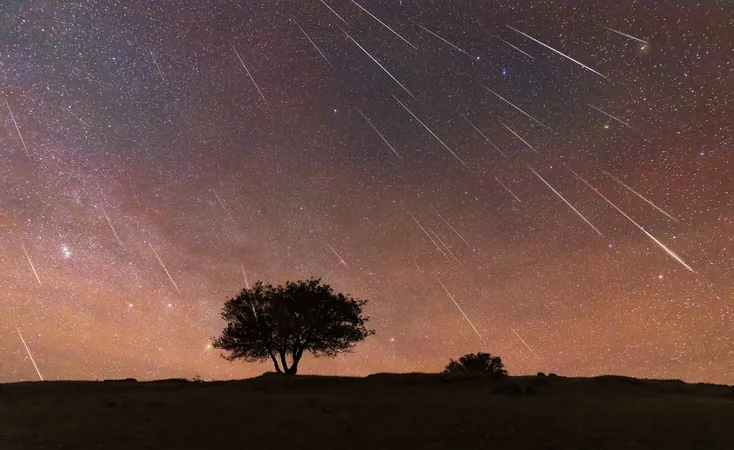
Draconids Meteor Shower: Your Ultimate Guide to the Celestial Spectacle!
2024-10-08
Author: Ting
Prepare yourself for a breathtaking evening as the Draconids meteor shower reaches its peak this Tuesday night! A visual treat of meteors—potentially hundreds per hour—could light up the sky if conditions are just right. This meteor shower has been gracing the skies since Sunday and will continue until Thursday, but mark your calendars for Tuesday when the show will be at its most spectacular.
Don’t worry about fancy gadgets like telescopes—this dazzling display can be enjoyed with just your naked eye! Unlike most meteor showers that demand an early morning watch, the Draconids can be marveled at right after sunset and throughout the evening, making it an ideal event for night owls and families alike.
Optimal Viewing Locations for the Draconids
The radiant point of the Draconids is nestled between the stars Eltanin and Rastaban in the Draco constellation. However, you don’t need to locate these stars to enjoy the meteors, as they can appear anywhere across the night sky. The key to an impressive view? Clear skies! Fortunately, the National Weather Service has predicted ideal conditions, particularly in Texas, California, and most Southeastern states (excluding Florida), along with a promising outlook for the Midwest.
Top Tips for Meteor Watching: How to Maximize Your View
If you're eager to catch the meteor shower, here are some recommendations from Anna Gammon-Ross, a senior planetarium astronomer:
1. **Give Your Eyes Time**: Spend at least 20 minutes outside to allow your eyes to adapt to the darkness.
2. **Seek Darkness**: While not absolutely necessary, finding a spot away from artificial lights will enhance your experience.
3. **Relax and Lie Down**: You'll be gazing up for a while, so make yourself comfortable!
4. **Dress Warmly**: Temperatures might drop during the night, so bundle up to enjoy the celestial show.
If you're looking to snap some stunning photographs, use a wide-angle lens with a high ISO sensitivity (ISO 3200 or above). Keep in mind that meteors are fleeting—exposures should be limited to a few seconds in light-polluted areas, while you can stretch it to 15-30 seconds in darker skies.
What to Expect This Year: Could We Witness a Meteor Storm?
The Draconids are birthed from debris left by comet 21P/Giacobini-Zinner as it burns through Earth’s atmosphere. Historically, this meteor shower is often considered a snooze-fest, rarely producing significant numbers of meteors. However, every few years, it surprises us with a dazzling show.
Astronomer Darren Baskill shared a thrilling tidbit: “Back in 1933, the Draconids erupted into a stunning storm with multiple meteors crossing the sky every second.” While we may not witness such an extraordinary event this year, there’s a hopeful chance of spotting a few shooting stars every minute—similar to rates observed in 2018, 2012, and 2005.
So grab your blankets and find your ideal viewing spot—this celestial spectacle is one you won't want to miss! Get ready to be amazed by the wonders of the universe on this enchanting October evening!



 Brasil (PT)
Brasil (PT)
 Canada (EN)
Canada (EN)
 Chile (ES)
Chile (ES)
 España (ES)
España (ES)
 France (FR)
France (FR)
 Hong Kong (EN)
Hong Kong (EN)
 Italia (IT)
Italia (IT)
 日本 (JA)
日本 (JA)
 Magyarország (HU)
Magyarország (HU)
 Norge (NO)
Norge (NO)
 Polska (PL)
Polska (PL)
 Schweiz (DE)
Schweiz (DE)
 Singapore (EN)
Singapore (EN)
 Sverige (SV)
Sverige (SV)
 Suomi (FI)
Suomi (FI)
 Türkiye (TR)
Türkiye (TR)